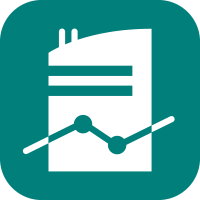
Wireless controls can be used to link devices found in a variety of building systems, including heating, ventilating, and air conditioning (HVAC), lighting, fire and life safety, and security and access. In addition, they often provide networked control in buildings or areas where wired controls are simply too challenging or expensive to install According to a recent report from Navigant Research, worldwide revenue from wireless control systems for smart buildings is expected to grow from $97 million annually in 2014 to $434 million in 2023.
“Although wireless controls are generally more expensive than their wired counterparts, that price gap is eroding quickly,” says Benjamin Freas, research analyst with Navigant Research. “Wireless controls also provide greater flexibility than wired ones, particularly the ability to install sensors and devices in buildings that cannot easily be torn apart to put in wiring, making wireless systems ideal for retrofit projects in existing buildings.”
While the adoption and deployment of wireless systems based on standard technologies and protocols, such as Wi-Fi, Zigbee, and EnOcean, are increasing, most wireless devices and control networks being used today utilize proprietary, vendor-specific wireless communications technology. That is likely to change, according to the report, as the demand for interoperability grows.
The report, “Wireless Control Systems for Smart Buildings”, examines the state of the global wireless building controls industry with a focus on commercial buildings and four system types: heating/ventilation/air conditioning, lighting, fire and life safety, and security and access. The report provides an analysis of the market drivers and opportunities, as well as technical challenges, related to wireless building controls. Global market forecasts for wireless node unit shipments and revenue, broken out by region, wireless technology, system, and device, extend through 2023. The report also examines the development of both propriety and standards-based wireless technologies and provides profiles of key industry players, including lighting controls vendors, wireless controls solutions providers, and enabling technology suppliers. An Executive Summary of the report is available for free download on the Navigant Research website.
About Navigant Research
Navigant Research, the dedicated research arm of Navigant, provides market research and benchmarking services for rapidly changing and often highly regulated industries. In the energy sector, Navigant Research focuses on in-depth analysis and reporting about global clean technology markets. The team’s research methodology combines supply-side industry analysis, end-user primary research and demand assessment, and deep examination of technology trends to provide a comprehensive view of the Smart Energy, Smart Utilities, Smart Transportation, and Smart Buildings sectors. Additional information about Navigant Research can be found at www.navigantresearch.com.
About Navigant
Navigant is a specialized, global expert services firm dedicated to assisting clients in creating and protecting value in the face of critical business risks and opportunities. Through senior level engagement with clients, Navigant professionals provide services that extend from expert and advisory work through implementation and outsourcing. The firm combines deep technical expertise in Disputes and Investigations, Economics, Financial Advisory and Management Consulting, with business pragmatism to address clients’ needs in highly regulated industries including Construction, Energy, Financial Services and Healthcare. More information about Navigant can be found at navigant.com.
Advertisement





